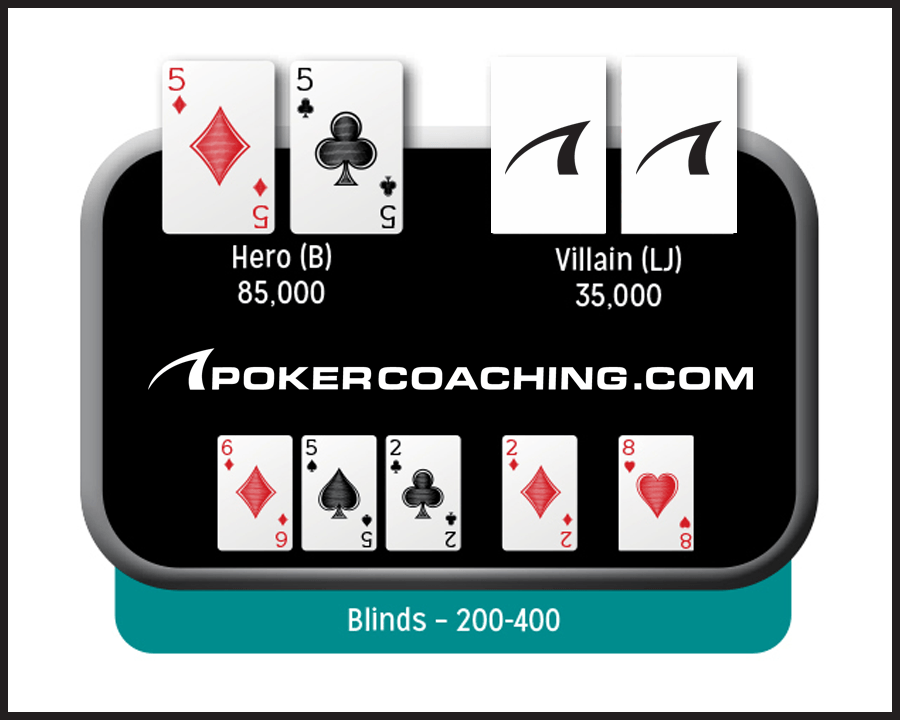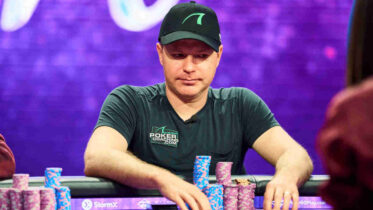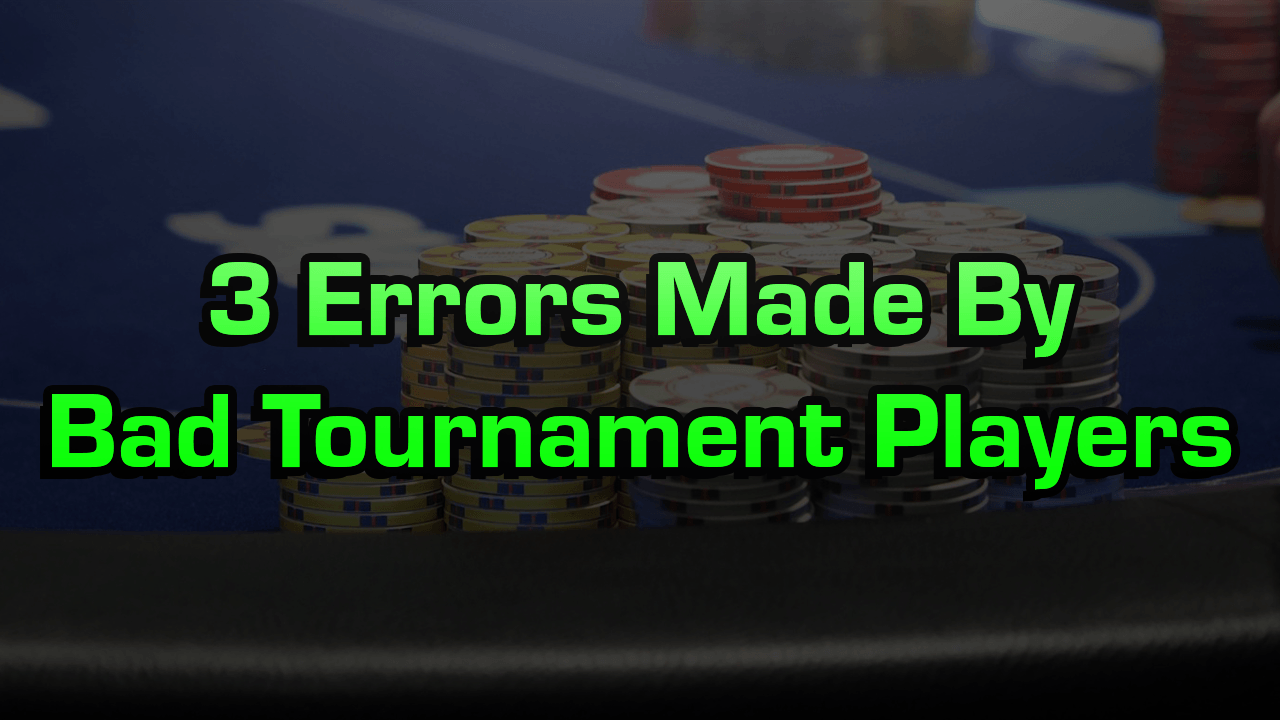Set-mining can sometimes feel like a never-ending endeavor that never bears results, but when you hit that third card on the flop, you know you have a shot at some great value. Properly playing sets requires being prepared for post-flop play, just because you hit three of a kind doesn’t mean the money is guaranteed. Take this hand quiz from a hand played in the Main Event, and apply the lessons to your flopped set strategy.
Scenario: You are eight-handed in the World Series of Poker Main Event with 85,000 chips with the blinds at 200-400. It folds to the lojack who raises to 1,000, the hijack calls, and it folds to you on the button holding 5♦-5♣.

Preflop Analysis
I cannot remember the last time I reraised in a spot like this. With small pairs, I recommend always calling preflop raises because when you three-bet, you will occasionally get four-bet, forcing you to fold. Getting four-bet off pocket fives keeps you from taking a very playable hand to the flop with a chance of hitting a set. Even if your opponent decides to just call your reraise, you are still in tough shape post-flop if you do not hit your set.
For the most part, with hands that either make clearly premium hands or clearly marginal hands post-flop, you prefer to see the flop and go from there.
Action: You call and the big blind calls as well. The flop comes 6♦-5♠-2♣, the big blind checks, and the lojack bets 6,000 (130% pot) out of their 34,000 stack. The hijack folds and action is on you.
Continuing With A Sound Set Strategy
The Pot: 4,200
The Board: 6♦-5♠-2♣
Effective Stack: 210 Big Blinds Effective
Flop Analysis
The first question you want to ask is, “what does my opponent’s range look like?” If your read suggests your opponent is holding mostly strong hands like overpairs, you should be inclined to raise. Considering the lojack only has 28,000 remaining, you could put them all-in.
A small raise should be avoided because while it does price your opponent in, if they have a hand like J-J and an ace or king comes on the turn, they may be able to make a tight fold. Since the lojack can have hands other than premium pairs, calling is likely ideal because it forces them to stay in the pot, allowing you to extract additional value on the turn and river. There’s also the player left to act in the big blind to consider.
Action: You call and the big blind folds. The turn is the 2♦ and this time the lojack checks.
Becoming a crusher at the table starts with crushing the fundamentals. Click here to see if you have what it takes.
Playing A Turned Full House
The Pot: 16,200
The Board: 6♦-5♠-2♣-2♦
Effective Stack: 195 Big Blinds Effective
Turn Strategy
When your opponent checks the turn, it is safe to assume they do not have a premium hand. You definitely want to bet with your full house, but what sizing should you use? 3,000 is too small for the strength of your hand, and while it may be tempting to try to get all the money in now, 16,000 is way too large. Betting 8,000 steadily grows the pot and leaves your opponent with only 20,000 behind on the river, which you should be able to reasonably get all-in.
Action: You bet 8,000 and your opponent calls. The river is the 8♥ and your opponent checks.
Weighing Your Options On The River
The Pot: 32,200
The Board: 6♦-5♠-2♣-2♦–8♥
Effective Stack: 175 Big Blinds Effective
River Analysis
Sometimes in big/important events (like the WSOP main event) you can rationalize using a non-all-in size. If you can tell your opponent really does not want to be knocked out of the “special” tournament, perhaps betting 16,000 is better than going all-in for 20,000.
But ignoring the times where your opponent is way more inclined to call a non-all-in bet than an all-in bet, since your opponent only has 20,000 behind and the pot is at 32,600, the right play is to put them all-in.
Conclusion: You shove and your opponent folds.
Want to take interactive quizzes like this, but in video format with audio feedback?
Check out the hundreds of quizzes offered to Poker Coaching members.




